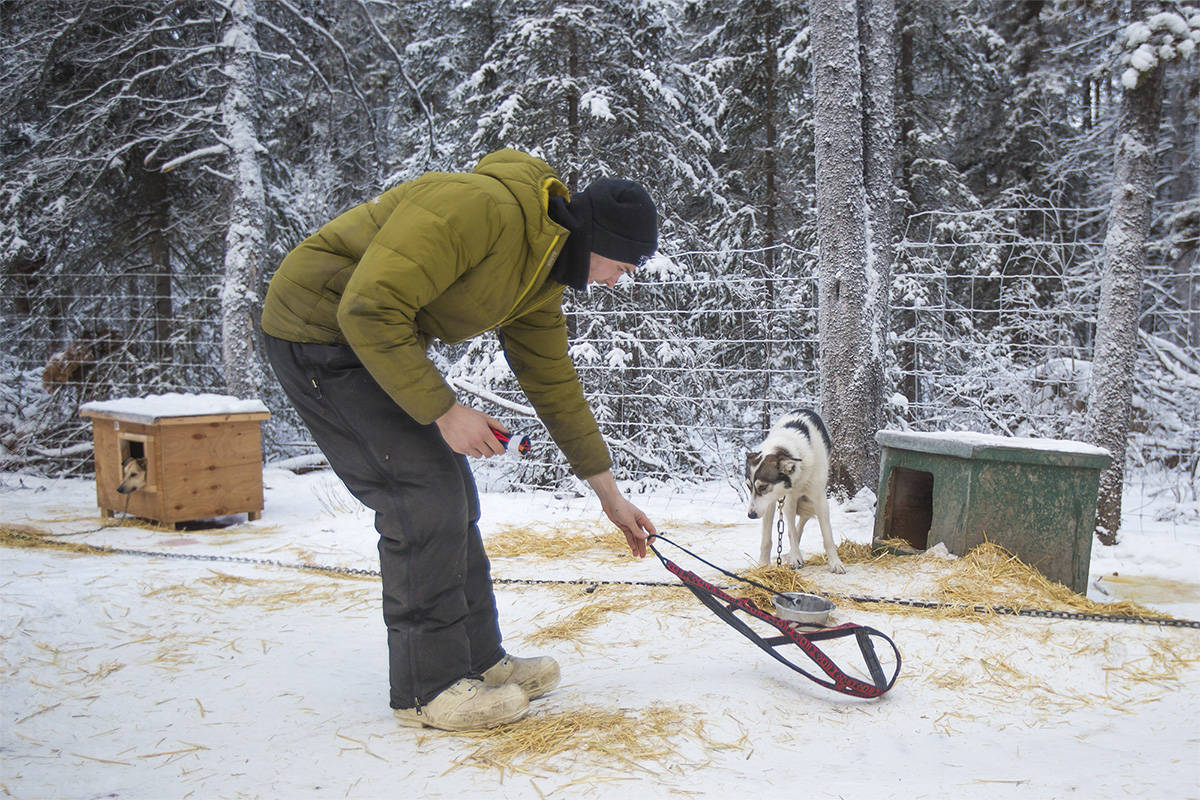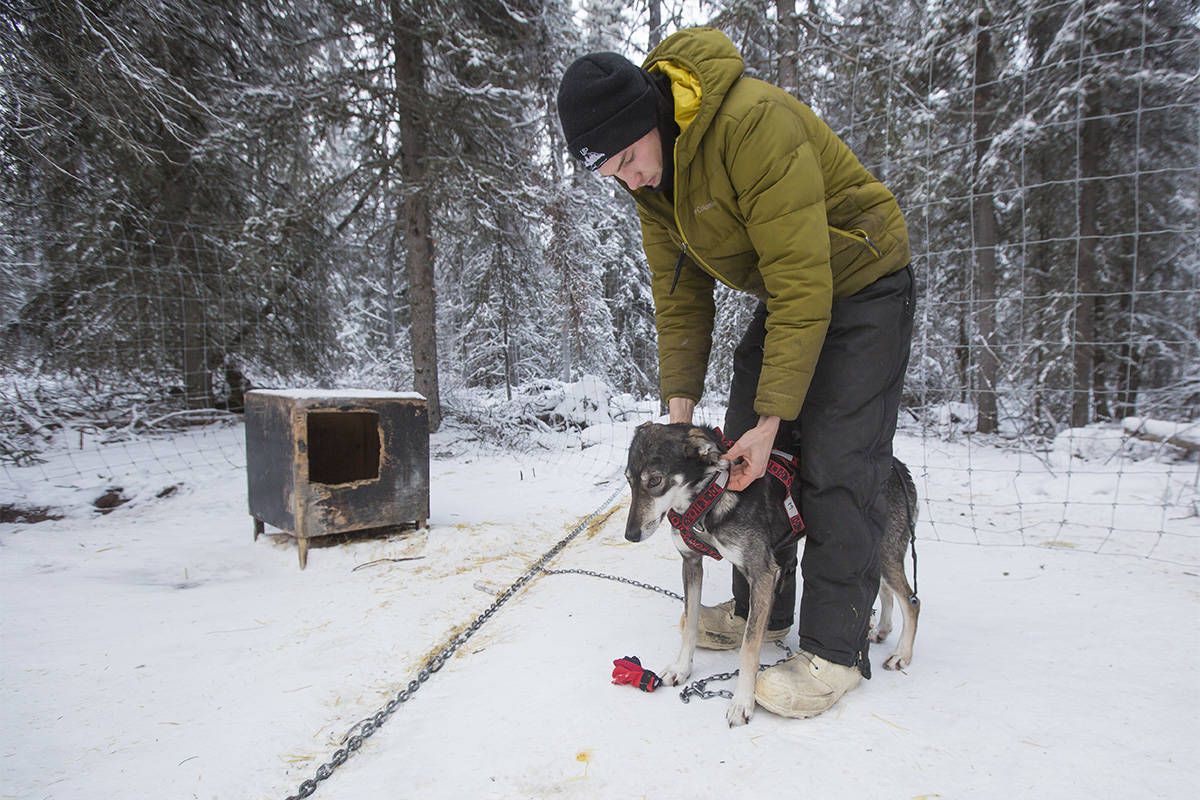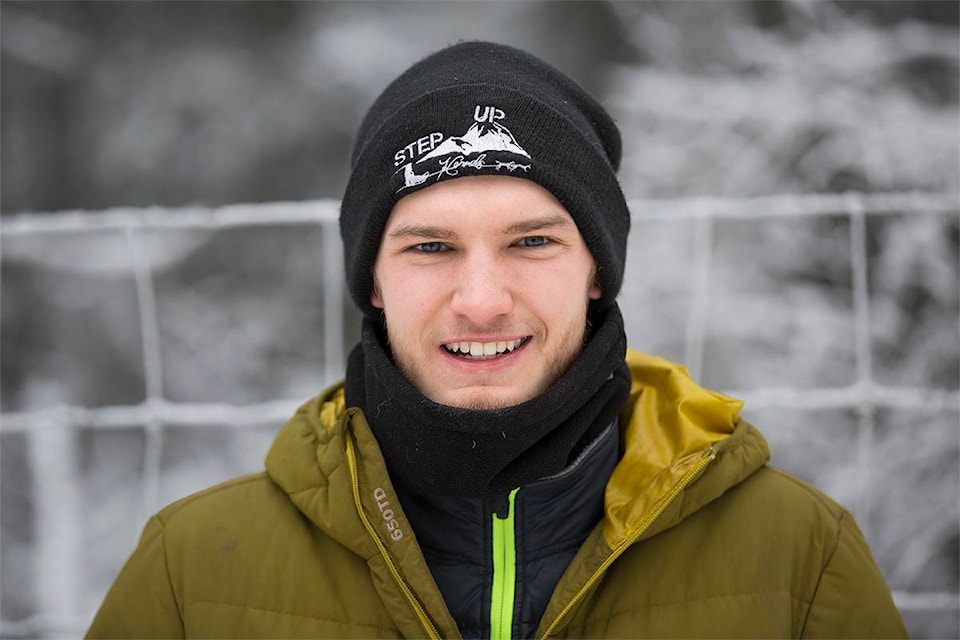This is the first in a series of profiles of some of the local mushers participating in this year’s Yukon Quest
The Yukon Quest is tough; there are no two ways about it.
Covering 1,000 miles — 1,600 kilometres — the race trail includes four major mountain summits and has just nine official checkpoints between Whitehorse, the start location for the 2019 race, and Fairbanks, Alaska, the finish line.
For a rookie musher, it’s a lot to take in.
Nathaniel Hamlyn was one of six rookies to finish last year’s Quest.
He was the red lantern winner after finishing last in the race, 13th, in a year that half the field, another 13 mushers, didn’t make it to the end.
Hamlyn is up front about last year’s race. After being forced to drop four dogs from his team in the first 160 km, he ran most of the race with just eight on the line.
“My rookie year was basically, literally, survival,” said Hamlyn during an interview at his home and kennel near Mount Lorne. “I wasn’t really interested in racing, I was just wanting to finish.”
One of the difficult aspects of the Quest in years it departs from Fairbanks, is dealing with Rosebud Summit and Eagle Summit early in the race. The dogs are charged up — full of energy and excitement — and often too keen to make up time on the steep descents.
“I’ve never come down a mountain like that — it was really fast — and that’s what happens,” said Hamlyn, about having to leave behind a full third of his team early on.
That led to other issues, like having to run his team longer than he’d planned in order to keep making progress.
“I ran into a problem where I was needing the dogs to run — I wasn’t planning on going so slow,” he said.
He trains his team at a speed of 16 km per hour, but he said it seems no matter what, mushers run into situations where they need to run about half that speed.
“The morale goes way down when you’re traveling at half the speed,” he said. “I needed them to run eight, nine, 10 hours straight to get anywhere.”
The plan was to run 80 kilometres and take a break, so the a slow team meant longer runs and the need for more supplies.
“You need to pack double the gear, double the food for (the dogs), just to get 50 miles (80 kilometres).”
The key, he said, is to make sure your team is ready for it.
“You’ve really got to watch your team and then see with your training how far you can push them,” he said. “You’re not going to do a 12-hour run if you’ve never done it in training. … You need to stop them before they actually want to stop themselves.”
Last year’s race was bitterly cold — in the neighbourhood of -40 C — for the majority of the race, but warmed up as the race was drawing to a close.
“They told me leaving Carmacks that there would be some overflow in Braeburn,” said Hamlyn about leaving the second-last checkpoint after a creek backed up and opened up onto the trail.
“(For) all the frontrunners, it was hard, it was still ice,” he said. “But for me, I was the last one and it was definitely open and it was a couple feet of water for what felt like a long time.”
His dogs were trying to avoid the water but kept getting caught in the trees, forcing Hamlyn to get out front of his team and lead the way.
“And my sled flipped over in the water, so it went from being extremely cold to that,” he said, adding the challenges didn’t stop there.
“Then I finished in basically a snowstorm, coming into Whitehorse with no trail. We were just going marker to marker. You couldn’t see a trail — it was just white.”
That’s a lot to deal with in one race, rookie or otherwise, and come back the next year looking for more, so what is Hamlyn hoping for this time out?
“A successful race for me will mean keeping most of my team to the finish line,” he said. “I’m going to try to keep the team together and happy — that’s my big goal.”
It’s a long play for him, it seems.
“I just want to learn and use what I learned last year and try to improve and keep the dogs healthy and happy.”
Born in Stephenville, Newfoundland, and raised in the Northwest Territories, Hamlyn started mushing seven years ago in Yellowknife, originally with the family pets.
“My dad had a couple Siberians,” he said. “First as pets, and then we hooked them up to a sled and started running, and kind of got hooked from there.”
They added more and more dogs – not only Siberian huskies but Inuit dogs as well – and soon had a kennel.
Hamlyn said he now races Alaskan huskies and that when he made the switch is “when the racing really started.”
“I started mixing some Alaskans into the Siberian team as leaders to make them go faster,” he said. “I thought, what’s the point of having a couple Alaskans to make the (Siberians) go faster when you’re just pushing them a bit too hard?”
So, four years ago, he switched his entire team to Alaskan huskies.
Heading into his sophomore race, there’s a quiet confidence from Hamlyn he’s earned after completing his first 1,000 miles under less than ideal circumstances.
He’s ready for the isolation and sleep deprivation, knows the trail and the distances between stops, and perhaps most importantly, knows he and his team can do it.
“I’m just looking forward to seeing my team,” he said. “I feel like this year the training has been a lot better than last year. I knew kind of how to train better. I did the schedule better for (the dogs), so I’m really just excited to see how it works.”
Hamlyn hopes the knowledge he’s picked up will take some of the guesswork out of this year’s race.
“I know the trail a bit better, so there won’t be as many surprises and I can plan my runs better knowing where everything is,” he said, mentioning water and straw for the dogs and food for himself specifically.
“Last year I packed way too much food for myself because I didn’t realize how great the checkpoints were. Even the hospitality stops have lots of food for the mushers,” he said.
He plans to start the race this year with 14 dogs — two more than last year — and seven of those are dogs he finished last year’s race with.
“Dogs that have ran the race before know where the checkpoints are,” said Hamlyn. “Even the ones who haven’t, they can smell the smoke, they can hear the people, and it’s just being alone for so long with none of that, the dogs just want any sign of humans. You do too.”
Heading from Whitehorse to Fairbanks this year presents its own unique challenges — namely conquering the summits with a tired, potentially short-handed team.
“It would really, really suck to be up in the mountains and your team just quits on Eagle Summit, let’s say. That’s definitely a worry I have, but I just need to trust in my training and the dogs,” he said.
And as for the sleep deprivation, well, he said there isn’t much that can be done about that.
“In a 24-hour period, you get an hour or two of sleep and it’s really not a lot,” he said.
Luckily, the people and places along the race make up for it.
“Some of the greatest moments were basically just the scenery,” he said. “You’d go through and you’d see sunsets, sunrises, alpine mountains, caribou, moose, all the wildlife, and the people along the trail were amazing. They’re always encouraging, always happy to see you. I was (in) last place the whole race and no one cared — they were just all happy, congratulating me and telling me to keep going. It was just amazing people out there.”
The 2019 Yukon Quest starts in Whitehorse on Feb. 2 and ends 1,600 kilometres away in Fairbanks, Alaska.
Contact John Hopkins-Hill at john.hopkinshill@yukon-news.com


